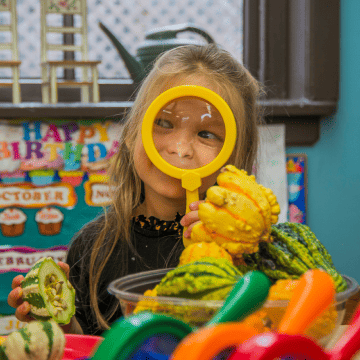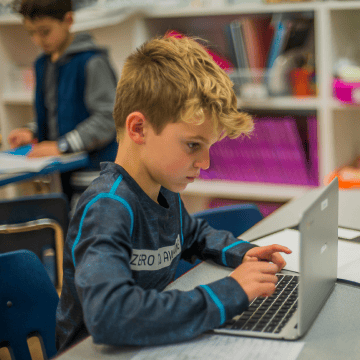In response to recent parental concerns about children and social media, All Saints invited Dr. Laura Coraci and Deirdre Miller of Thumbs Down. Speak Up. (TDSU) to talk with our families about helping children navigate the increasingly complex digital world. Their presentation offered valuable insights and practical tools for fostering healthy, responsible online habits.
At TDSU, the emphasis is on developmental readiness over chronological age and skill mastery over constant parental oversight. By keeping the conversation open and ongoing, parents can empower their children to make thoughtful decisions online. Here are some key takeaways from the discussion, along with actionable #Digitaldialogues to help keep the conversation going at home.
Encourage Critical Thinking About Social Media Readiness
Many platforms require users to be at least 13 years old—but why? Rather than simply setting age limits, engage your child in a dialogue about what skills and maturity levels are needed to interact online responsibly.
#DigitalDialogue: Ask your child: Why do you think social media platforms have age restrictions? Do you think they are effective? What skills do you think someone needs before they start using social media? This conversation encourages your child to think critically about their readiness and develop a sense of digital responsibility.
Define Your Family’s Online Values
What are the guiding principles that shape how your family engages online? Whether it’s prioritizing well-being, respecting others’ privacy, or maintaining a balance between screen time and real-life activities, defining these values together can help set clear expectations.
#DigitalDialogue: Ask your child: What do you think our family’s online values should be? How can we translate values like kindness and respect into our digital interactions? This discussion helps children recognize that their digital behavior is an extension of their real-world character.
Teach Healthy Coping Mechanisms for Online Challenges
Social media can be an emotional rollercoaster. From feeling left out of an event to getting fewer likes than expected, online interactions can sometimes lead to stress or anxiety. Helping your child build resilience is key to maintaining a healthy relationship with technology.
#DigitalDialogue: Ask your child: Have you ever felt anxious or upset after being online? What are some ways you cope with difficult emotions? Share your own experiences and coping strategies, reinforcing that emotions are normal and manageable.
Build a Trusted Team for Online Interactions
As children begin to interact online, having a support system in place can help them navigate tricky situations. A “Trusted Team” is a group of reliable adults and peers who can provide guidance and support when needed.
#DigitalDialogue: Work with your child to identify their Trusted Team. Ask: Who would you feel comfortable turning to if something online made you uncomfortable? How would you like your Trusted Team to help you? Reinforce that reaching out for support is a sign of strength, not weakness.
Model the Behaviors You Want to See
Children learn digital habits by observing the adults around them. From mindful device use to respecting others’ privacy, modeling healthy online behaviors helps set a strong example.
#DigitalDialogue: Ask your child: Do you notice any habits I have when using my phone or social media? What do you think I do well? What could I do better? This discussion fosters mutual accountability and encourages both parents and children to be more intentional about their online interactions.
Get Permission Before Posting
Every so often, remind yourself: Children are influenced by what you do. Before sharing or posting a photo, ask your tween if they mind. However your child answers, respect their decision—for real!
#DigitalDialogue: Ask your child: How do you feel when someone posts a picture of you without asking? How can we be more respectful of each other’s digital boundaries? Modeling this habit helps children understand the importance of consent and respect in online spaces.
Understand How Social Media Works Behind the Scenes
Many children don’t realize how algorithms, AI, and engagement techniques shape their online experience. Teaching them to be media-savvy can help them make informed decisions about the content they consume.
#DigitalDialogue: Ask your child: What do you know about how social media algorithms work? Have you noticed how your feed changes based on what you like or watch? Exploring these topics together can help your child develop a critical eye when engaging with digital content.
Take a Step-by-Step Approach to Online Independence
Rather than setting rigid rules, work with your child to gradually develop their online independence based on their maturity level. Adjust access and supervision as needed, ensuring they have the skills to handle each new stage responsibly.
#DigitalDialogue: Ask your child: What new online privileges do you feel ready for? What skills do you think you still need to work on? How can we measure your progress together? By treating online readiness as a developmental journey, you help your child take ownership of their digital growth.
Navigating the digital world is a shared responsibility between parents and children. By fostering open discussions and creating teachable moments, you can help your child build the skills and confidence needed to interact online safely and responsibly. For more resources, check out TDSU’s blog for additional insights on digital readiness.




